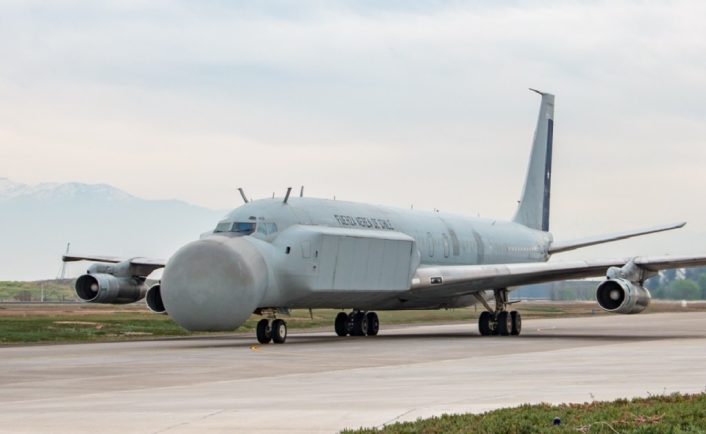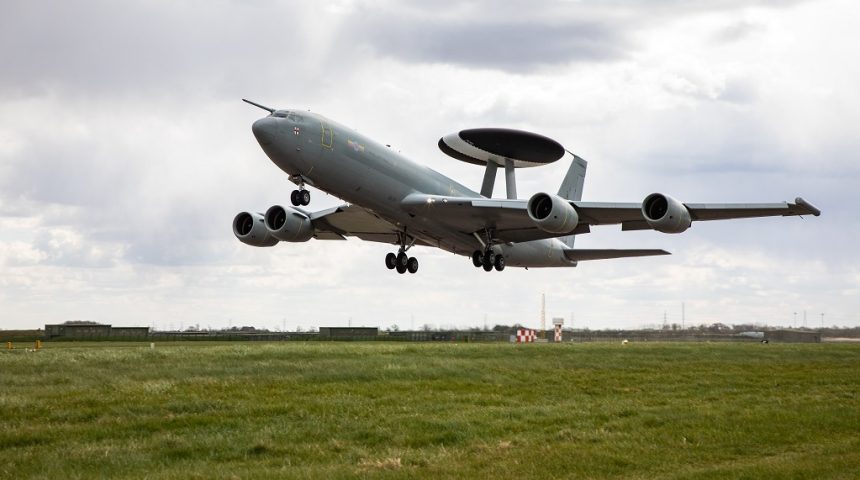The aircraft, retired from service last year, should replace the Boeing 707 Cóndor.
The Chilean Air Force (FACh) might get in the near future three of the E-3D Sentry AEW Mk.1 recently retired by the Royal Air Force. An unspecified source, reported by both the UK Defence Journal and Janes, said that Chile acquired three airframes, of which one will be used for spare parts, to replace the Boeing 707 Cóndor currently in service. Neither the British or the Chilean governments confirmed the deal yet.
The E-3D flew the last operational sortie with the RAF in July 2021, closing a 30 year-career in the UK earlier than expected to concentrate resources on the new E-7A Wedgetail that is scheduled to enter service in 2023. One of the remaining airframes has already been sold to the United States to be converted in an E-6B Mercury pilot training aircraft and already moved to Northrop Grumman’s Lake Charles Maintenance and Modification Center (Lake Charles Airport, Louisiana).
According to the source, negotiations started immediately after the E-3D’s retirement and Chilean crews and technicians were sent to the UK in late 2021 to inspect the aircraft and work on the conversion training courses. After the inspections, the FACh reportedly selected the airframes registered as ZH101 (c/n 24109/993), ZH103 (c/n 24111/1004), and ZH106 (c/n 24114/1011), which could possibly fly to Chile later this year.
The Chilean Air Force’s single Boeing 707 Cóndor is near the end of its operational life, being initially built as Boeing’s demonstrator and testbed in 1965 and later used as airliner by Chile’s flag carrier, before being modified in Israel for AEW (Airborne Early Warning) missions. The aircraft entered service in this new configuration, also known as IAI Phalcon, in 1994 and is becoming increasingly costly and complex to maintain, being one of just three being built. The engines contribute to this problem too, since they are the original 1950s-era Pratt & Whitney JT3D low-bypass turbofans.

The Cóndor carries an Israeli-made Elta EL/M-2075 Phalcon L-band active phased-array radar system, which consists of six separate antenna arrays. One of them is housed in the peculiar enlarged nosecone, while another pair can be found in two large cheek fairings on the sides of the fuselage and the last one under the tail. The radar is capable of tracking both aerial and maritime targets with a range of up to 200 nm with a total coverage of 360°.
According to some sources, the aircraft, that has been grounded for some time already, will never return to flight.
View this post on Instagram
The E-3D that will take the Cóndor’s place features more recent CFM56 high-bypass turbofan engines, as well as some UK-specific modifications that differentiate the aircraft from the E-3 Sentry used by other operators. Among the modifications, a hose and drogue refueling probe was added next to the existing boom receptacle, as well as wingtip ESM (Electronic Support Measures) pods, an enhanced Maritime Surveillance Capability, JTIDS (Joint Tactical Information Distribution System) and Have Quick 2 encrypted radios. The Sentry features the AN/APY-2 passive electronically scanned array radar housed in the distinctive rotating radome on top of the fuselage.
Interestingly, in the same days the news about the deal was first reported, one of the retired E-3Ds was flying again over the UK and had to declare emergency. The aircraft was ZH103, one of the airframes selected by Chile, and declared emergency with both the international 7700 squawk and a pan-pan call flying with the callsign SOLEX01. The call was also reported on Twitter, providing more details about what happened: “PAN PAN PAN. Auxillary system loss. Dumping fuel in North Sea soon, then heading to Waddington.”
“PAN PAN PAN”
SOLEX01
234.500Mhz
“Auxillary system loss. Dumping fuel in North Sea soon, then heading to Waddington”. pic.twitter.com/onU9Z19u0K
— Col_McGowan (@mm0ndx) January 18, 2022









